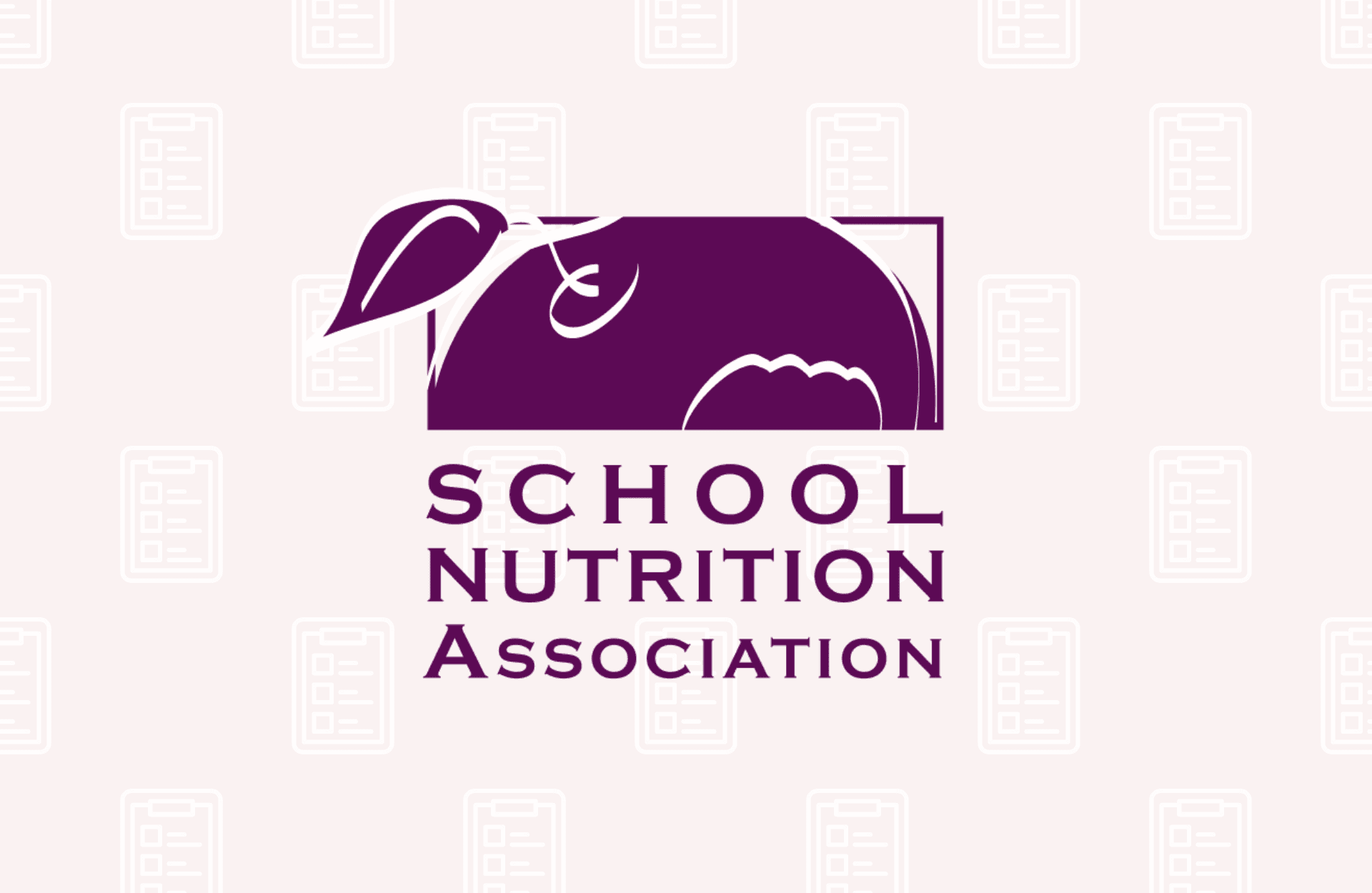FOR IMMEDIATE RELEASE:
Contact: Diane Pratt-Heavner
301-686-3124
media@schoolnutrition.org
SNA National Survey Reveals Increased Efforts to Promote Student Consumption of Healthy Choices
2016-09-06
NATIONAL HARBOR, MD – A new national survey of school meal program operators reveals that more school cafeterias are utilizing strategies to increase consumption of fruits, vegetables and other healthy choices, while expanding student access to school meals through programs such as the Community Eligibility Provision. The findings are part of School Nutrition Association (SNA)’s School Nutrition Operations Report: The State of School Nutrition 2016, based on survey responses from nearly 1,000 school nutrition directors nationwide.
“Just like parents, school nutrition professionals know that offering kids healthier options is only half the battle – we also have to entice them to eat those nutritious choices,” said SNA President Becky Domokos-Bays, PhD, RD, SNS. “Despite tight meal program budgets, school nutrition professionals are employing creative tactics to promote healthy menu options as they welcome students back to the school cafeteria.”
The survey found that since 2014, when the majority of updated nutrition standards for school meals were in effect, more school meal programs have launched initiatives to market healthier school food choices and increase their appeal among students.
- Nearly 50% of responding districts have implemented Farm to School initiatives (up from 37.5% in the 2014 survey)
- 72.3% employ student taste tests/sampling (up from 64.4%)
- 18.4% have chef partnerships/recipe development (up from 12.3%)
- The survey also revealed these initiatives are being considered or planned in 15 to 24% of additional districts.
- Click on the links for examples from: Georgia; Hillsborough County, Fla.; Minnesota
School districts are also mixing up the menu, offering a wider variety of choices to appeal to diverse student tastes and dietary needs or preferences. For example:
- 66.5% offer salad or produce bars (up from 62.9% in 2014)
- 57% of districts report offering locally sourced fruits and vegetables (up from 52%)
- 44.5% offer gluten-free food options (up from 37.2%)
- The survey also found that well over half of districts offer pre-packaged salads, vegetarian meals, and Asian and Mexican food options.
- Click on the links for examples from: Portland, Ore.; Sacramento, Calif.; Loudon County, Va.
Meal programs are making it easier for parents and students to learn about menu options and conveniently manage school meal payments.
- Nearly 82% of districts reported offering online payments
- Nearly 62% notify families of low account balances through automated phone calls, texts or emails
- 45% offer online access to nutrition and allergen information
- Nearly 34% of districts use social media and more than a quarter employ mobile apps to communicate with parents and students
- Click on the links for examples from: Cincinnati, Ohio; Greeley, Colo.; Chandler, Ariz.
Schools are also working to expand student access to nutrition throughout the day. School Breakfast Program participation continues to increase, and this trend is tied to innovative service models that allow students to conveniently purchase a healthy breakfast outside of the traditional cafeteria line. The survey found that nearly half of responding districts report utilizing alternative breakfast service venues. Among these districts 56.2% offer Grab & Go breakfast kiosks outside of the cafeteria, and nearly 43% deliver breakfasts directly to the classroom. Schools have also expanded options for students during the summer with nearly 55% of meal programs operating Summer Meal Programs, up from 46.7% in 2014.
The survey also tracked the expanded use of the Community Eligibility Provision (CEP), which allows eligible schools serving predominately low income students to offer all students free school breakfast and lunch without an application. More than 24% of respondents reported using CEP, which was first piloted in 2011 and available to all eligible schools nationwide in the 2014/15 school year.
CEP participation was associated with a number of positive benefits. Participating districts reported higher breakfast and lunch participation and were significantly more likely to report that the federal reimbursement rate was sufficient to cover the cost of producing a reimbursable meal. In addition, since CEP schools offer free meals to all students, they do not struggle with unpaid student meal debt, a situation faced by three quarters of responding districts.
School meal programs, particularly those ineligible for CEP, continue to face financial challenges as they work to promote healthy lifestyles for students. A plurality of respondents reported that the federal reimbursements for school breakfast and lunch were not sufficient to cover the costs of producing a meal in the 2015/16 school year. Nearly half reported breakfast reimbursements were inadequate, with 46% reporting lunch reimbursements inadequate (more than 12% were unsure). In addition, the average daily lunch participation rates for a typical district continue to decline, with district-wide lunch participation dropping to 61%, down from 64% in 2014 and 68% in 2011.
To address these challenges, SNA continues to call on Congress to pass a Child Nutrition Reauthorization bill that provides additional funding for school meal programs and includes the Senate agreement on school nutrition standards. SNA opposes H.R. 5003, the Improving Child Nutrition and Education Act of 2016, which would restrict school eligibility for CEP and institute a block grant pilot that would cut funds for school meal programs.
“With students back in school, Congress cannot afford to further delay Child Nutrition Reauthorization,” said Domokos-Bays. “School meal programs depend on Congress’ support to help make updated nutrition standards a success for all students.”
The State of School Nutrition 2016 survey was conducted in June and July 2016. The report is based on the analysis of 960 responses received from SNA members representing districts nationwide. Other notable trends tracked in the report include district demographics, school meal prices, lunch periods, food bans, equipment and technology. Members of the media may contact media@schoolnutrition.org to request the report.
About School Nutrition Association:
The School Nutrition Association (SNA) is a national, non-profit professional organization representing 56,000 school nutrition professionals across the country. Founded in 1946, SNA and its members are dedicated to making healthy school meals and nutrition education available to all students. For more information on school meals, visit www.SchoolNutrition.org/SchoolMeals.
Related Articles

SNA Urges MAHA Commission to Invest in School Meals
Read More

School Nutrition Professionals to Implore Congress to Protect School Meals
Read More




